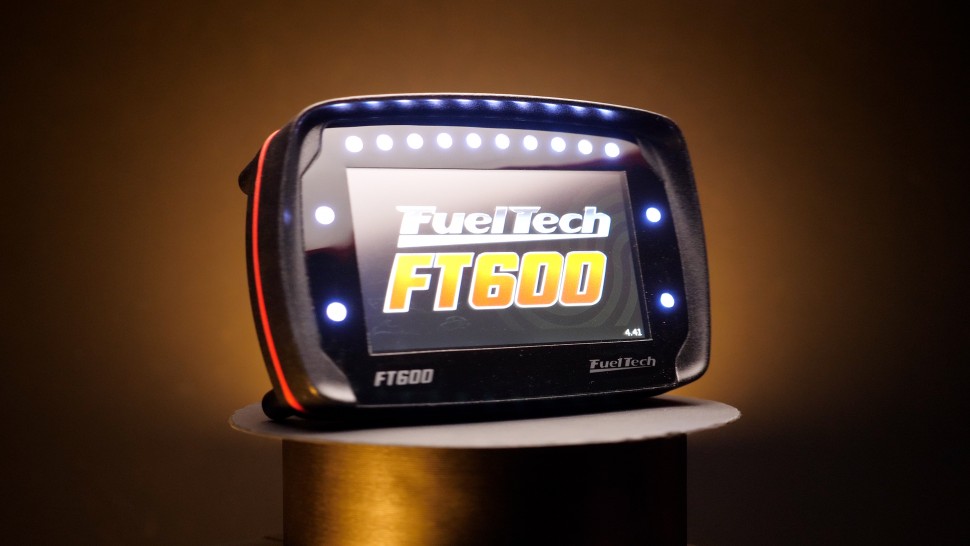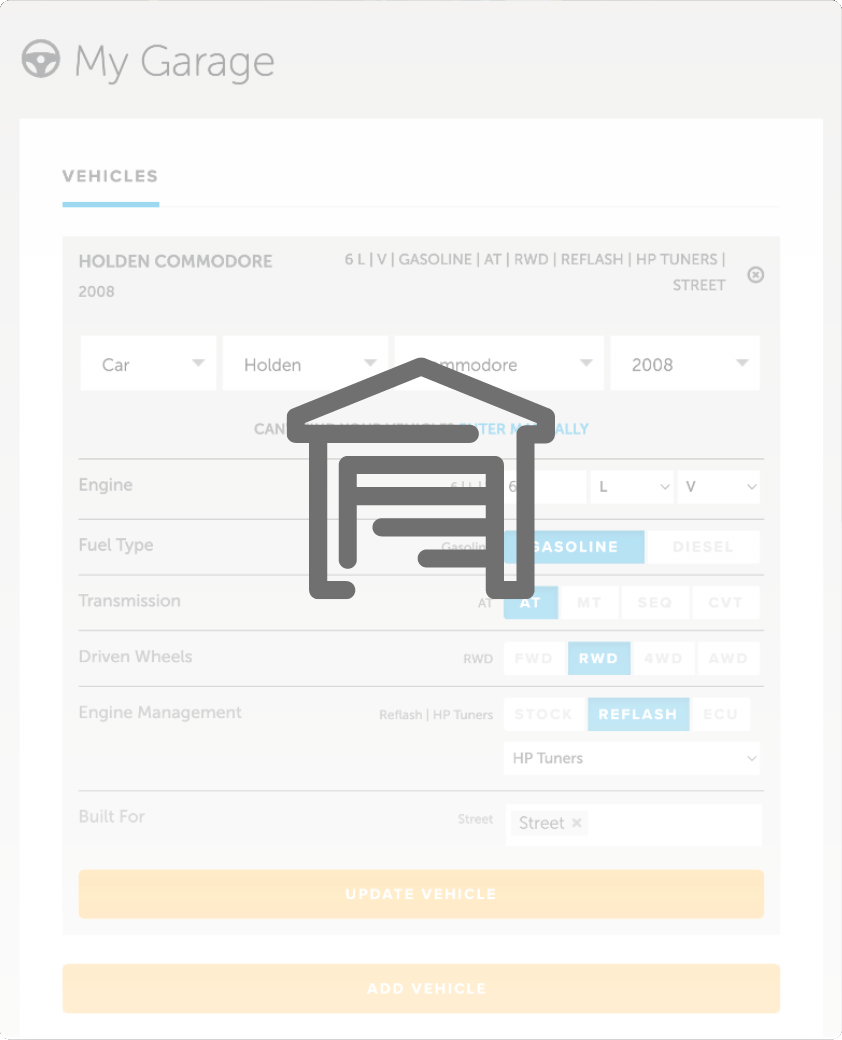| 00:00 |
As we're setting up a transmission tune, accurate tire size and final drive ratio data are vital.
|
| 00:06 |
These are some of the most common items that trip people up because they're so frequently modified in the performance aftermarket, but people don't often know how to adjust their TCM to suit.
|
| 00:16 |
For the tires, I'm not talking about retuning the car over and over as the tires wear little by little, but I like to start with an accurate value.
|
| 00:25 |
I often find when I measure the tires myself, I come up with values different from manufacturer posted values.
|
| 00:32 |
Taking your own measurement can avoid error, which can put all other hard work calibrating the transmission properly at risk.
|
| 00:40 |
My method, and there are certainly others, is to place the vehicle on a relatively smooth, flat, paved surface, free of debris.
|
| 00:48 |
I inflate the tires to the operating pressure I want to measure at, which is generally full operating pressure and not the pressure found before vehicle use when tires are cooler, which would be a lower pressure.
|
| 01:00 |
I mark a tire on an unsteered wheel on the driver's side with a tire marking crayon, vertically down the sidewall where the tire is nearest to the ground, and then line that mark up with a mark on the ground or edge of an object that will remain stationary on the ground to save that spot for measurement later.
|
| 01:19 |
This could be a book or a box heavy enough to stay put, just whatever is handy and has a straight edge for accurate measurement.
|
| 01:27 |
I mark a driver's side tire so I can hold the steering wheel straight while pushing the vehicle and watching my tire mark to count tire rotations as the vehicle moves forward.
|
| 01:37 |
At five rotations where the tire mark lines up with the ground so it's vertical, mark the ground.
|
| 01:44 |
Use a measuring tape to get the distance from there to the measurement mark or object at the start of the test.
|
| 01:51 |
I record that value the first five rotations.
|
| 01:55 |
I then move the car another five tire rotations worth, mark the ground again, and measure from that end mark to the middle mark made after the first five rotations.
|
| 02:07 |
I record the second measurement, then confirm the first and second measurements are very similar.
|
| 02:13 |
They should be near identical, so if they aren't, I would try again from the beginning until you get two consistent results.
|
| 02:20 |
Once we have two measurements that are almost identical, I add them together and divide by 10 which is the total number of rotations measured.
|
| 02:29 |
This gives me the distance traveled in one rotation of the tire in real world conditions at the tire pressure I want to use for measurement.
|
| 02:39 |
To convert that measured circumference to diameter, also called tire height, which I've used in my gearing calculations, I divide the circumference by pi.
|
| 02:49 |
Personally, I use 3.14159 as my good enough truncated pi value.
|
| 02:55 |
Here's an example.
|
| 02:57 |
A value of 440 inches for five rotations followed by 440.4 inches on the next five rotations shows I've done a reasonable job in getting repeatable results, so I'll proceed from there.
|
| 03:11 |
So 440 plus 440.4 equals 880.4 inches for 10 rotations.
|
| 03:18 |
880.4 divided by 10 equals an 88.04 inch circumference.
|
| 03:24 |
88.04 divided by 3.14159 equals a 28.02 inch tire diameter or tire height.
|
| 03:36 |
Measuring at operating pressure is especially key for road course applications which tend to go out on track with low air pressure, many gaining 10 or more psi as more heat builds on track.
|
| 03:49 |
For a vehicle always used loaded down or towing, perform the test with it loaded in normal operating conditions.
|
| 03:57 |
If you only tow some of the time and usually drive without a load, then I would measure without it.
|
| 04:04 |
For a drag car with a tall sidewall slick, tire growth can not only be extreme but less predictable until we have data to work from on each tire and application.
|
| 04:15 |
In the drag car scenario, you can take a starting measurement with the tire inflated more than usual to give the ground-facing portion of the tire more support during measurement.
|
| 04:26 |
For example, if you usually run 6 psi on the tire but on a launch the tire rapidly grows to make it look like it would sitting static with 20 psi in it, take your measurement with 20 psi on the tires.
|
| 04:39 |
In this use case, this is a starting point and testing and data logging are key to correct the measurement after the fact.
|
| 04:47 |
GPS speed reference can also be a big help in determining just how much the tire is growing.
|
| 04:53 |
When axle and gear ratios are known and if you lock the torque converter clutch for a test to remove slip from the equation, you can view vehicle speed versus GPS speed and get a better feel for tire size change as the vehicle goes down the track.
|
| 05:08 |
So now we've worked out how to measure our tires, let's figure out the final drive ratio, also commonly referred to as the axle ratio.
|
| 05:18 |
For simplicity's sake though, I'm going to refer to it as the final drive ratio from here on out.
|
| 05:24 |
In some cases, we may be working with a brand new vehicle that's never been tuned or physically modified so we can be certain the data in the stock tune is already correct.
|
| 05:35 |
If that's the case, we won't need to use the following info but it'll still be useful to know regardless.
|
| 05:41 |
If on the other hand, there's any chance the tune has been altered and the data may be entered incorrectly or the vehicle may have been modified, this is must-have knowledge.
|
| 05:53 |
Sometimes owners don't recall which final drive they have or whether it's been changed.
|
| 05:59 |
In many cases, a vehicle is purchased second hand and really the only way to be sure what's present is to check.
|
| 06:07 |
The first option to confirm final drive involves having the cover off the differential to visually count the teeth on the ring and pinion gears.
|
| 06:17 |
In a differential, the ring gear generally looks like a ring or donut with teeth on it and the pinion gear is typically a shaft with a conical section on the end with teeth on it.
|
| 06:27 |
The pinion is the input gear and the ring is the output gear.
|
| 06:32 |
To find the final drive ratio, we count the teeth on each and divide output teeth by input teeth.
|
| 06:39 |
So for example, if we have 10 pinion teeth and 39 ring teeth, we take 39, divide it by 10, giving us a 3.9 final drive ratio.
|
| 06:51 |
Alternatively, we can ballpark the axle ratio on some rear-wheel drive vehicles with a strong limited slip differential by jacking the rear end up or having the vehicle on a lift and rotating a driven wheel once while counting how many times the drive shaft between the transmission and the rear differential spins.
|
| 07:13 |
If the vehicle has an open or weak viscous differential, we can jack only one corner of the vehicle up, leave the others on the ground, and spin the driven wheel that's up in the air one time and count the drive shaft rotations.
|
| 07:29 |
This is far less precise than counting teeth, and if we have let's say a 3.7 rear end ratio, how do we know when we're at 3 .7 drive shaft rotations versus 3.65 rotations? We certainly aren't going to be eyeballing a 3.545 ratio.
|
| 07:46 |
For this reason, I'm not a fan of the precision of this method, but if we're absolutely certain, the rear end ratio can only be one of a few options and they're very far apart, like perhaps a vehicle only has options of 3.23, 3.7, or 4.11.
|
| 08:05 |
In that case, this method may be precise enough to determine which of those options we have.
|
| 08:11 |
Like most things, the less we assume and the more we know, the better our chance of success will be.
|
| 08:18 |
Also, the spin a tire and watch the drive shaft method only works when the input and the output of the final drive are visible.
|
| 08:27 |
In the case of a transaxle with an integrated final drive, like perhaps a typical front engine front wheel drive setup, or maybe a rear mounted transaxle rear drive setup, because the input to the final drive isn't externally visible, we're back to opening things up to verify the ratio, unless we're absolutely sure of what's inside.
|
| 08:49 |
So when do we actually need to check these things? If you're sure you're working with a stock calibration, and the wheels and tires are definitely original to the vehicle, you're fine as is.
|
| 09:02 |
If however, the tune might not be stock, or if the tires or wheels may have been changed, I suggest measuring yourself so you can be sure you're entering known good data.
|
| 09:14 |
Now that we've covered taking some measurements, next we're going to get back to how things work with some more in-depth info on the torque converter and lockup clutch.
|
| 09:24 |
One of the key factors in when the lockup clutch can be engaged is the relationship between engine speed and wheel speed.
|
| 09:32 |
And with our actual tire size and final drive ratio in hand, we're ready to perform the necessary calculation to determine minimum vehicle speed for converter lockup.
|
| 09:43 |
Before we jump into that though, let's quickly run over the main takeaways covered in this module before moving on.
|
| 09:50 |
Anytime we're measuring street tires, I suggest doing so at normal operating pressure.
|
| 09:56 |
If working with a tire whose size varies a lot in operation, a compromise is inherent because tire circumference changes so much as the vehicle heads down the track.
|
| 10:07 |
Even if you change wheel width and keep the same tires, the shape of the tire and contact patch and resulting tire circumference can change too.
|
| 10:17 |
When it comes to confirming final drive ratios, counting the teeth and dividing output tooth count by input tooth count gets you an exact result.
|
| 10:26 |
If we're certain the potential final drive options are known and spread far enough apart for clarity, and we're working with a vehicle that has an exposed input to the final drive that we can see, then the rotate a wheel and watch the drive shaft method of determining final drive ratio may be good enough.
|





